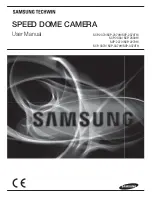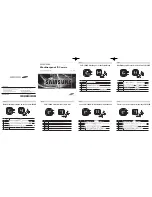
Version 1.0 rev 14 Aug 2019
34
Balor
4.6.1 s
pURioUs
n
oise
f
ilteR
The
Spurious Noise filter
corrects for pixels that would otherwise appear as spurious ‘salt and pepper’ noise spikes in
the image. The appearance of such noisy pixels is analogous to the situation of Clock Induced Charge (CIC) noise spikes
in EMCCD cameras, in that the overall noise of the sensor has been reduced to such a low level, that the remaining
small percentage of spurious, high noise pixels can become an aesthetic issue. The filter actively corrects such high
noise pixels, replacing them with the mean value of the neighbouring pixels. The filter can be switched on and off by the
user prior to data acquisition.
Figure 8: A demonstration of the effect of the Spurious Noise Filter, on a dark image, 20 ms exposure time.
4.6.2 b
leMisH
c
oRRection
f
ilteR
The
Blemish Correction Filter
identifies and compensates for three types of blemishes during the FPGA processing
step:
1. Hot Pixels
2. Noisy Pixels
3. Unresponsive Pixels
sCMOS sensors are particularly susceptible to hot pixel blemishes. These are pixels that have significantly higher
darkcurrent than the average. Through deep TE cooling of the sensor, it is possible to dramatically minimize the
occurrence of such hot pixels within the sensor, and still use them for quantitative imaging. However, if the cooling is not
sufficient to remove the hot pixels they are marked as blemishes and interpolative filters are used to correct them. These
filters work by taking the mean of the surrounding 8 pixel values and replacing this hot pixel blemish with this mean
value.
Figure 9: Hot, noisy or unresponsive pixel value (left) may be interpolated using values from the surrounding 8 pixels (right).
Such interpolation can be detrimental in some applications that depend on total quantitative integrity over a limited set
of pixels (e.g. PALM and STORM techniques) as well as astronomy. In these applications it is essential for the user to
be able to switch off interpolative corrections. Furthermore, having access to the location of these blemishes allows an
accurate map of ‘good’ pixels to be determined by the user. The end user can request a ‘hot pixel map’ of their sCMOS
sensor from Andor.















































